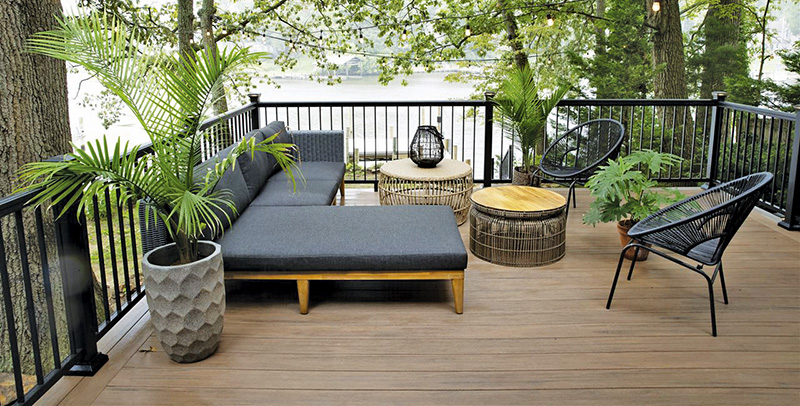Tips To Sustainably Transform Your Outdoor Oasis
August 16, 2021

(Brandpoint) — Home improvement projects and repairs increased during the pandemic, and demand is expected to continue with permanently transformed work schedules and remote telecommuting here to stay. According to a recent report, more than half of homeowners are finding time in their schedule for home improvement projects. There’s been an increased demand for in-home office spaces, gyms and deck expansions. While these amenities are gaining popularity, many homeowners want to build them in a way that’s sustainable.
If you plan to refresh your outdoor space, it’s important to think about how these improvement measures retain or increase sustainability. At the same time, there are many ways to achieve a more sustainable home, starting with your backyard.
You can personally help make a difference by considering these simple tips:
Add an eco-friendly deck
Your outdoor deck is the social cornerstone of your home. You probably use it for outdoor dining, grilling and even late-night stargazing. Whether you’re looking to expand your home’s living space or need to replace an old deck, ditch the run-of-the-mill wooden deck for a sustainable, composite option like TimberTech. With artisanal finishes and realistic wood grain textures, TimberTech looks just like wood but is more sustainable because it is made from recycled materials like milk jugs and detergent bottles. While wood decks need to be replaced every 10-15 years and require annual maintenance like staining, your new composite deck can be enjoyed for a lifetime, with innovative protection that safeguards your deck from mold and moisture damage.
If you’re planting, utilize plants that are native to your area
If you want to reduce your impact and add some color to your home, spruce up your yard and planters with native plants and wildflowers from your area. In fact, planting native plants can benefit the local ecosystem, as they provide diverse nutrients and resources for the surrounding wildlife, require less water than lawns and help prevent erosion. Non-native plants could be harmful to the local ecosystem as they are one of the leading causes of biodiversity loss.
Use solar lights to minimize energy consumption
To enjoy your backyard haven well into the night, improve your exterior lighting with solar lights. Even on the cloudiest of days, solar output is abundant, making solar lights an eco-friendly option that uses a renewable power source. Standard lightbulbs can increase energy consumption and carbon emissions in your home. Be sure to replace the old, worn-out incandescent bulbs with LED lights that use less energy and glow brighter.
Going green doesn’t mean sacrifice
As more people recognize their environmental impact, they’re looking for ways to reduce their carbon footprint, starting right at home with the sustainability of the materials they use in their home improvement projects for in and outside the home.
Visit www.timbertech.com/about/sustainability to learn how you can go against the grain with your eco-friendly outdoor living space.
